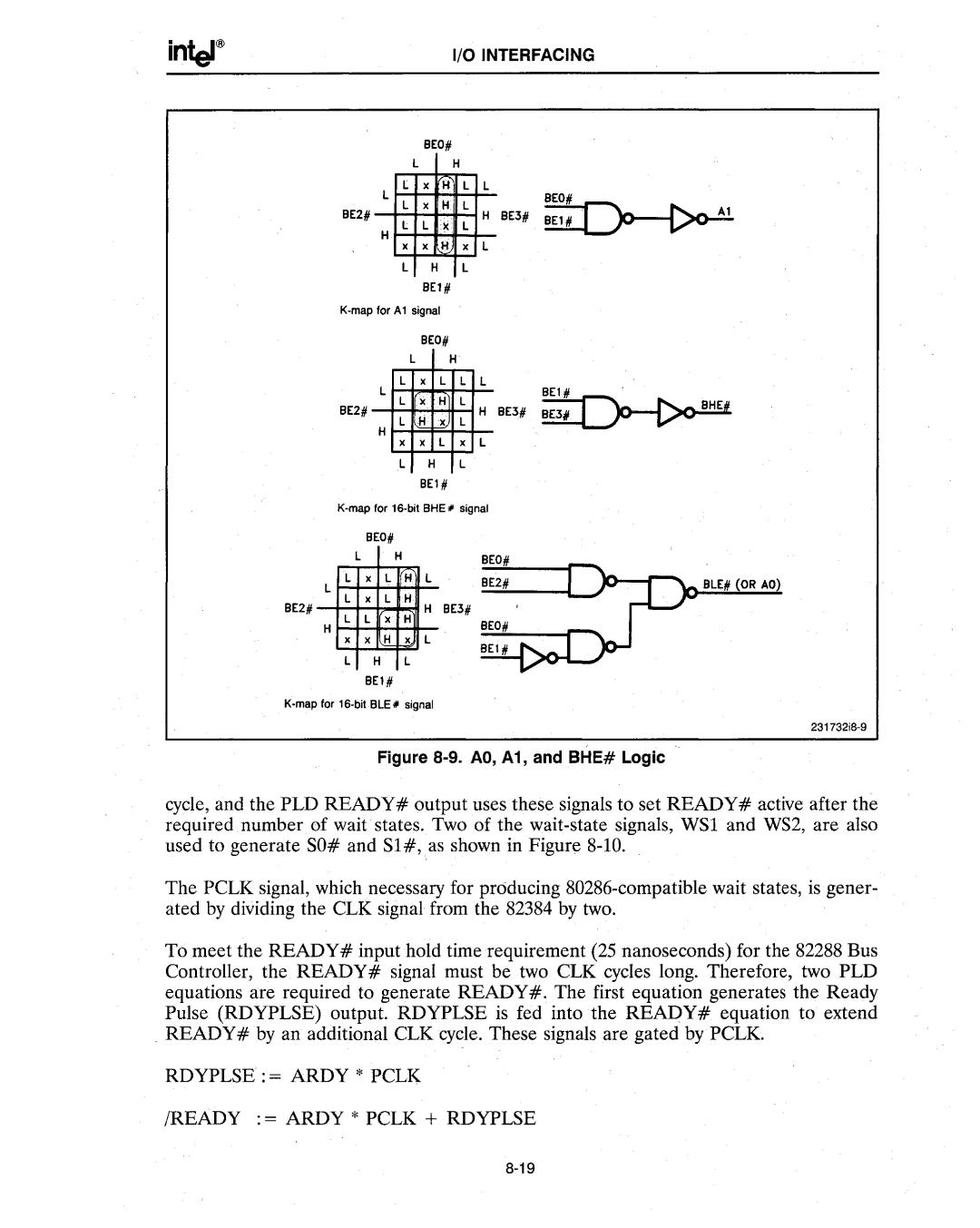
I/O INTERFACING
BEDI
|
|
| l |
|
| H |
|
|
|
|
| |
|
| l | l | x | Ii | l | l |
| BEDI |
| ||
BE21 | L | l | '~. | l | H | BE3I | ||||||
| BEll | |||||||||||
|
|
| l | x | If | l | l |
| Al | |||
|
|
| x | x | Ii | x |
| |||||
|
|
|
|
|
|
|
|
|
|
| ||
|
| H |
|
|
|
|
|
|
|
|
| |
|
|
| l | H | l |
|
|
|
|
| ||
|
|
|
| BEll |
|
|
|
|
|
| ||
|
|
|
|
|
| |||||||
|
|
|
| BEDI |
|
|
|
|
|
| ||
|
|
| l |
| H |
|
|
|
|
| ||
|
| l | l | x | l | l | l |
| BEll |
|
| |
|
| l | .x: | H | l |
|
|
| HE | |||
BE21 |
| H | BE31 | BE31 |
| |||||||
|
| H | l | H | :x | l |
|
|
| |||
|
|
|
|
|
|
|
| |||||
|
|
| x | x | l | x | l |
|
|
|
| |
|
|
| l | H |
| l |
|
|
|
|
| |
|
|
|
| BEll |
|
|
|
|
|
| ||
|
|
|
| |||||||||
| BEDI |
|
|
|
|
|
|
|
|
| ||
| l |
| H |
|
|
|
|
|
|
|
| |
l | x | l | H | l |
|
|
|
|
|
|
| |
l | x | l | .H |
|
|
|
|
|
|
|
| |
l |
| BE31 |
|
|
|
|
| |||||
BE21 | l | X' H | H |
|
|
|
|
| ||||
l |
|
|
|
|
|
|
|
| ||||
H | x | H | .x | l |
|
|
|
|
|
|
| |
x |
|
|
|
|
|
|
| |||||
l H l
BEll
K-map for lS-bit BlE # signal
231732i8-9
Figure 8-9. AO, A1, and BHE# Logic
cycle, and the PLD READY# output uses these signals to set READY# active after the required number of wait states. Two of the
The PCLK signal, which necessary for producing
To meet the READY# input hold time 'requirement (25 nanoseconds) for the 82288 Bus Controller, the. READY# signal must be two CLK cycles long. Therefore, two PLD equations are required to generate READY#. The first equation generates the Ready Pulse (RDYPLSE) output. RDYPLSE is fed into the READY# equation to extend READY# by an additional CLK cycle. These signals are gated by PCLK.
